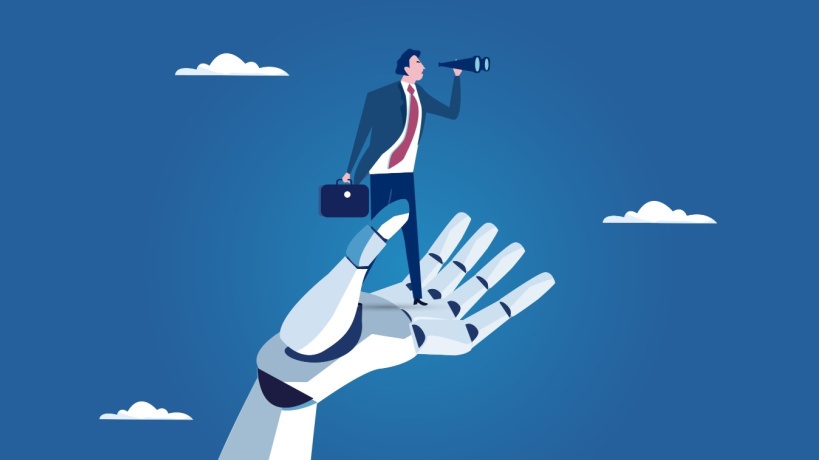Leveraging ChatGPT For Adaptive Learning In Corporate Training
Artificial Intelligence, specifically ChatGPT, is playing a pivotal role in creating adaptive learning experiences. This innovative approach has the potential to revolutionize the way we approach training and development, making it more immersive, relevant, and impactful for learners, employers, and clients. As an eLearning designer, understanding how to leverage this technology effectively is crucial in delivering training that truly resonates.
What Is ChatGPT?
ChatGPT is a state-of-the-art language processing AI developed by OpenAI. It has the ability to understand and generate human-like text, making it a powerful tool in the realm of eLearning. Its versatility and adaptability enable it to provide personalized learning experiences, a key factor in effective training.
The Need For Personalized Learning
Traditional eLearning often adopts a one-size-fits-all approach, which can lead to disengagement and ineffective training outcomes. Personalized learning, on the other hand, tailors the educational experience to individual learner’s needs, preferences, and performance levels. This approach not only enhances engagement but also ensures that learning is more relevant and impactful.
Integrating ChatGPT For Adaptive Learning
- Personalized interaction
ChatGPT can simulate one-on-one interactions, providing tailored guidance and support to learners. This fosters a more engaging learning experience that adapts to each learner’s pace and understanding. - Content customization
ChatGPT can assist in creating and customizing course content. Whether it’s generating new material or adapting existing resources, it ensures that the content matches the learner’s current level and learning style. - Real-time feedback and assessment
ChatGPT’s ability to provide instant feedback is invaluable in a learning environment. This immediate response mechanism helps learners understand their progress and areas for improvement, fostering a continuous learning cycle.
The Benefits To Learners/Employees
For learners, the integration of ChatGPT in eLearning brings numerous benefits:
- Enhanced engagement
Personalized content and interactive experiences keep learners engaged and motivated. - Effective learning
Tailored learning paths ensure that the training is relevant, making the learning process more efficient and effective. - Flexibility
Learners can progress at their own pace, leading to a more comfortable and stress-free learning experience.
The Benefits To Employers
Employers stand to gain significantly from incorporating ChatGPT-enabled adaptive learning:
- Improved training outcomes
As employees engage more with personalized content, their learning outcomes improve, leading to better job performance. - Cost-effectiveness
Adaptive learning reduces the need for generic training programs, cutting down on unnecessary training costs. - Data-driven insights
ChatGPT can provide valuable insights into employee learning patterns, helping employers make informed decisions about future training needs and workforce development.
The Benefits To Clients
The ripple effect of effective training reaches clients as well:
- Improved service quality
Better-trained employees are more capable and confident in their roles, leading to improved service quality. - Innovation and adaptability
Employees trained with the latest AI technology bring innovative solutions and adaptability to client needs. - Enhanced reputation
Companies known for their effective training and skilled workforce are more attractive to clients, enhancing business opportunities and partnerships.
Creating An Immersive, Adaptive Learning Experience With ChatGPT
- Interactive scenarios
Use ChatGPT to create realistic scenarios that learners can navigate, enhancing problem-solving skills and real-world application. - Gamification
Incorporating game-like elements, facilitated by ChatGPT’s dynamic content generation, can make learning more engaging and enjoyable. - Storytelling
ChatGPT can help weave compelling narratives in training modules, making complex concepts more understandable and memorable.
Overcoming Challenges
While the integration of ChatGPT in eLearning is promising, it’s not without challenges:
- Technical integration
Seamlessly integrating ChatGPT into existing eLearning platforms requires technical know-how and resources. - Quality control
Ensuring the AI-generated content maintains high quality and accuracy is crucial. - Continuous updating
AI models like ChatGPT need regular updates and monitoring to stay effective and relevant.
Best Practices For Implementation
- Start small
Begin by integrating ChatGPT in a small section of your eLearning course and gradually expand its use based on feedback and results. - Focus on learner experience
Always keep the learner’s experience at the forefront. Ensure that the technology enhances, rather than complicates, the learning process. - Collaborate with experts
Work with AI specialists and Instructional Designers to create a well-balanced and effective learning environment.
The Future Of eLearning With ChatGPT
The future of eLearning with technologies like ChatGPT is incredibly bright. As AI continues to evolve, so will its capabilities in creating more nuanced and sophisticated learning experiences. eLearning designers who embrace this technology will find themselves at the forefront of an educational revolution, crafting training programs that are not only informative but also deeply engaging and impactful.
Conclusion
The integration of ChatGPT in eLearning is a game-changer, offering a path to more personalized, immersive, and effective training. For learners, it means engaging and relevant learning experiences. For employers, it translates to improved training ROI and workforce performance. And for clients, it results in better service and innovation. As eLearning designers, embracing this technology means stepping into a new realm of possibilities, creating training that truly makes a difference.

